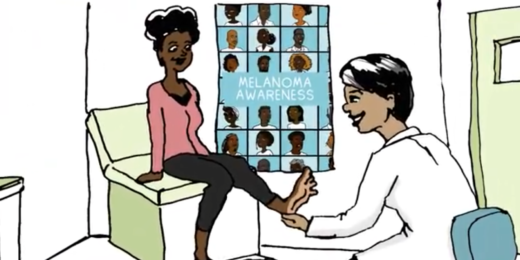About 20 years ago, scientists developed a powerful antibody treatment that helps the immune system find and kill tumor cells in neuroblastoma, a cancer that affects very young children, nearly all under age 5.
While the antibody treatment has improved survival rates and saved many lives, it doesn't work for every neuroblastoma patient. A Stanford Medicine-led study published July 11 in Nature Cancer, may explain why: Neuroblastoma cells can reroute their development, swerving onto a biological pathway where they keep multiplying and become invisible to the antibody.
But the study also showed that an existing anti-cancer drug -- approved for a few other types of cancer -- can set up a "roadblock" at the entrance to the evasive cellular detour, forcing neuroblastoma cells to stay on the developmental path that renders them susceptible to antibody-mediated destruction.
"We think we've found a mechanism of immune escape," said Stanford pediatric oncologist Robbie Majzner, MD, who co-led the research with Kimberly Stegmaier, MD, of Harvard Medical School. Most forms of cancer immunotherapy have been developed without knowledge of how the cancer might get around the treatment, he said: "To understand that, after all this time, and have a way to subvert it using an FDA-approved drug that has already been tested in kids, is pretty exciting."
The results come from experiments in cell cultures and mice, but the findings offer strong support for developing clinical trials in children that combine the antibody and the "roadblock" drug, Majzner said.
A spoonful of sugar?
Most neuroblastomas occur in babies and young children, with about 800 cases diagnosed in the U.S. each year. The tumors can stem from developing nerve cells anywhere in the body and often grow in the abdomen. They can cause a wide variety of symptoms, depending on where the tumors occur. Although most children with less severe forms of the disease survive, nearly half of the about 400 children who are diagnosed with advanced neuroblastoma each year die of their disease.
The antibody treatment, called dinutuximab, targets GD2, a sugar molecule found on the exterior of some neuroblastoma cells. If a cell has GD2 on its surface, the antibodies bind to it and attract immune cells, including macrophages, which "eat up" the malignant cell and natural killer cells, which directly kill the cancer cells.
When the antibody was developed, scientists did not understand why GD2 might be present on cancer cells, how its levels are regulated or how the anti-GD2 antibodies functioned. Majzner's team and others have been probing these questions to find ways to make the treatment more effective.
Recently, Majzner's team started looking into one question in particular: Does it matter to the antibodies if GD2 levels on individual cells are high or low?
Some neuroblastoma cells have a great deal of GD2 on the surface, making it easy for the antibodies to nab them for destruction, while others that have little or no GD2 are invisible to the antibodies, his team found. That gave them a clue -- making less GD2 might allow the cancer to escape from antibody therapy.
Two roads diverge ...
The new study revealed that neuroblastoma cells can follow one of two developmental pathways, mimicking the two routes by which healthy developing nerve cells mature: into nerves, or into nerves' support cells.
When they follow the nerve-like roadway, neuroblastoma cells make lots of GD2, rendering them vulnerable to antibody treatment. But on the alternate route, neuroblastoma cells don't make any GD2, hiding them from the treatment.
When neuroblastoma relapses in patients, it appears to do so by taking the alternate developmental path, enabling the cancer to better evade treatment, said Majzner.
But the researchers showed, in experiments on cell lines and mice with neuroblastoma, that they could keep cells on the GD2-rich path by giving a drug that regulates how DNA is packaged. The drug, called tazemetostat, which has been approved by the FDA to treat certain forms of sarcoma and lymphoma -- a type of bone cancer and lymph node cancer, respectively -- blocks the actions of proteins that interact with DNA to allow cells to shift from one developmental track to the other. It's like putting a big "Wrong Way" sign at a highway junction, keeping all the traffic flowing on a single route.
Majzner hopes the team will soon be able to launch a clinical trial combining the two drugs. Neuroblastoma isn't the only cancer in which cells display varied levels of GD2; the same thing happens in two childhood bone cancers, osteosarcoma and Ewing sarcoma, as well as in small-cell lung cancer.
"If this approach bears fruit in neuroblastoma, we think it could apply to other cancers, too," Majzner said.
Photo by Jane






